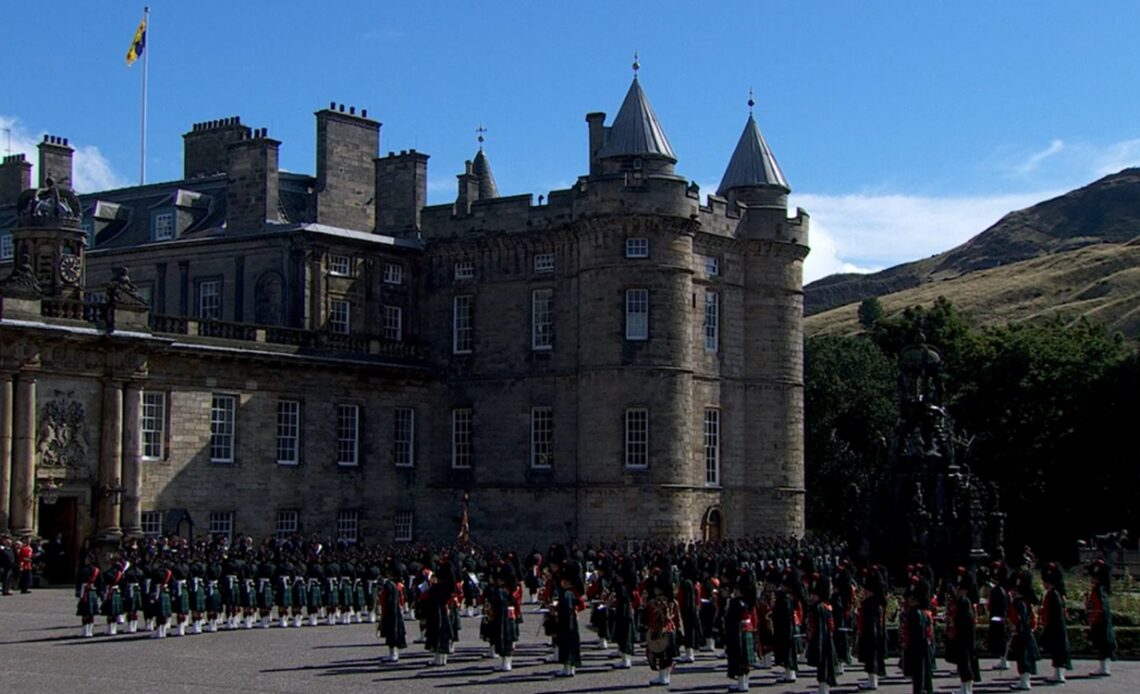
For more than 500 years, the Palace of Holyroodhouse, also known as Holyrood Palace or Holyrood House, has been the principal royal residence in Scotland. Its history takes in some of the most famous of royal names like Mary, Queen of Scots and now it serves as the residence of King Charles III when he is in Scotland.
The Palace was founded by David I as an Augustinian monastery in 1128. As The Abbey prospered and Edinburgh became recognised as Scotland’s capital, Holyrood became the place where kings chose to live when visiting the country. In 1501, James IV cleared the ground close to The Abbey to build a palace for himself and his bride, Margaret Tudor – the sister of Henry VIII. Today, only a fragment of the gatehouse survives.
[getty src=”2639180″ width=”594″ height=”393″ tld=”com”]As new monarchs ascended the throne, the palace would continue to change. James V added a massive tower between 1528 and 1532 and a new west front south tower was added between 1535 and 1536. Mary, Queen of Scots would spend most of her turbulent life in the palace. Reigning from 1542 to 1567, she married two of her three husbands at Holyrood House. In addition, her secretary David Rizzio was murdered inside her private apartments by a group led by her husband Lord Darnley. Darnley is said to have been jealous of Rizzio’s influence over the former queen.
By the time Charles I was crowned in 1633, renovations would continue on the palace. Charles II would be crowned in Scotland in 1651. While he never returned there, he initiated a substantial rebuild of Holyroodhouse in the 1670s. Led by Scottish architect, Sir William Burce, a tower was added to the right of the palace to add a symmetrical façade. New royal apartments were also added and featured rich decorations like plasterwork ceilings.
In the 20th century, King George V and Queen Mary would continue renovation and restoration efforts. As they considered the palace a family home, they went on to install bathrooms, lifts, and electricity to bring the palace up-to-date with the times. This would also mark the beginning of the tradition of garden parties at the palace. In 1922, the palace became selected as a site of the Scottish National Memorial to Edward VII, and a statue of Edward was put on the forecourt facing The Abbey.
[getty src=”1456838799″ width=”594″ height=”407″ tld=”com”]The British monarch spends one week, known as “Royal Week” at the palace each summer. As property of the Crown and an official royal residence in Scotland, building maintenance and conservation on The Abbey or palace falls to the Scottish government. In April 2016, the Royal Collection Trust announced £10m in funding to redevelop the outside space at Holyrood including the grounds and forecourt. The project was completed in 2018.
[getty src=”1243137963″ width=”594″ height=”396″ tld=”com”]Following the death of Queen Elizabeth II on 8 September 2022 at Balmoral Castle, her coffin was transported to the palace where it lay in repose in the Throne Room from 11 to 12 September. It was then taken in procession to St Giles’ Cathedral. This marked the first obsequies in Scotland for a monarch since James V’s burial at Holyrood Abbey in January 1543.
The palace is open to the public all year.

